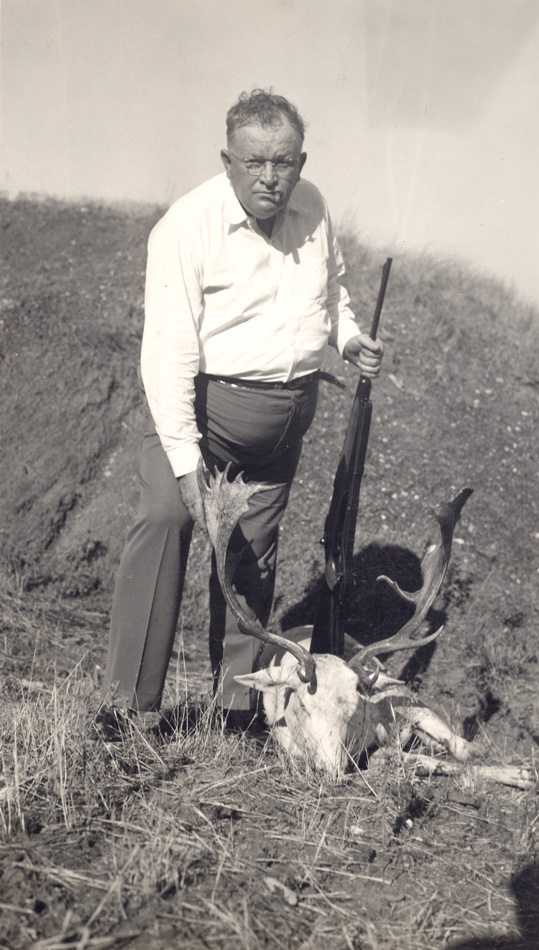
The Encyclopedia of Oklahoma History and Culture
PHILLIPS, LEON CHASE (1890–1958).
The eleventh governor since statehood, Leon Phillips was born on December 9, 1890, on a farm in Worth County, Missouri. His parents were Rufus Putnam and Bertha Bressler Phillips. In 1892 his father bought land west of present Clinton, Oklahoma, later moving the whole family to their new home. After graduating from the local public education system, Phillips attended Southwestern Normal School in 1908 and taught school in the Keelor District of Custer County.
A higher calling brought Phillips to Oklahoma City in 1909, and he entered the Methodist seminary at Epworth University (later Oklahoma City University). In 1911 he realized a career in ministry was not to his liking, and he transferred to the University of Oklahoma to study law. He completed his degree in 1916, working as an attorney until World War I began in 1917. He would serve his country throughout the war as a private in the artillery division of the U.S. Army.
After returning to Okemah, Phillips became active in politics, serving in various party positions. These led to his election to the Oklahoma Legislature in 1932. While in the legislature, he served as speaker of the House of Representatives in 1935, as well as being Democratic minority leader in 1937. After being reelected in 1934 and 1936, he ran for governor in 1938 and won.
In his inaugural address he emphasized the need for court reform. Reform was administered during his terms by the reorganization of the Oklahoma Highway Commission and by the steps taken to balance the state budget, including reorganizing and reducing the number of gasoline inspectors. He also helped create, as well as appoint, the Oklahoma State Regents for Higher Education.
In spite of these accomplishments his career as governor was impeded by labor disputes, many from the oil industry. Phillips was also split on the party line. In 1940 he was head of the Democratic Party in Oklahoma, but he would not back Roosevelt, the Democratic candidate, for reelection. Phillips even switched parties briefly in 1943 after mounting frustration with Roosevelt and the New Deal.
Throughout his term he received many honors, including and being made honorary chief of the Otoe tribe. He also made the presentation to the nation of the Will Rogers statue in the U.S. Capitol building in Washington, D.C. Phillips was a member in many organizations, including the Oklahoma Bar Association, the Benevolent and Protective Order of Elks, the Knights of Pythias, and the Kiwanis.
Phillips was married twice. He married Myrtle Ellenberger in Norman on June 19, 1916, and they raised two children, Robert Rowe and Lois Ann. The couple later divorced in 1951. On April 24, 1953, he married Helen Conklin.
After retiring from the office of governor, Phillips moved back to his farm near Okemah, and he continued to practice law. A decade and a half later Phillips would pass on, dying of a heart attack in the post office in Okmulgee on March 27, 1958.
See Also
COMMUNIST PARTY, DEMOCRATIC PARTY, GOVERNMENT AND POLITICS, GREAT DEPRESSION, HIGHWAYS, NEW DEAL, TWENTIETH-CENTURY OKLAHOMA, WORKS PROGRESS ADMINISTRATION






